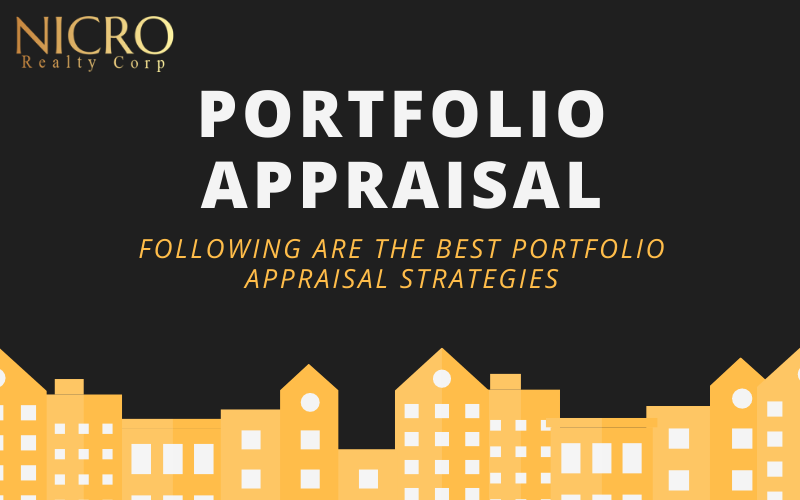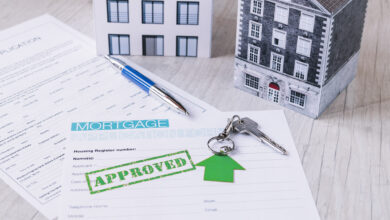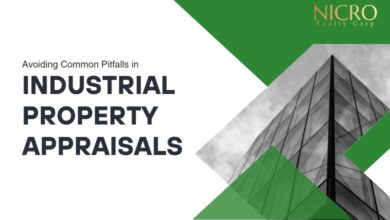What is a Portfolio Appraisal?

The Quarterly Report’s Portfolio Appraisal section contains a list of all the assets you hold. Assets are divided into asset classes, sectors, and eventually individual stocks, exchange-traded funds, bonds, and cash. There are numerous different portfolio assessment techniques you can use when appraising a portfolio.
Following are the best portfolio appraisal strategies
Each of these methods works uniquely. An evaluation of the quality of your assets and investments is known as a portfolio appraisal. It compares the acquisition price to the portfolio’s future profit. It also calculates how much money you might be able to make when you sell your homes.
Benchmark & Style Portfolio appraisal strategy
These are the most basic approaches for determining the quality of your portfolio. They first compare it to the market index to provide a rudimentary understanding of its worth. You may, for example, compare the worth of the properties in your portfolio to the value of the comparable real estate in your area. By comparing it in this way, you may quickly determine where you stand.
The growth style of individual parts in your portfolio appraisal is compared using a style comparison. If you own four residential properties, you would compare their primary growth index to their actual growth. This gives you a sense of how well your property values are rising in comparison to market expectations.
Depending on the attributes, you’ll utilize each of these methods differently. Residential assets, for example, are valued differently than industrial properties. Because humans must live in residential properties, environmental valuation methodologies are more stringent than in industrial properties. An expert examination is usually required to break down these property values.
Risk Assessment Appraisal
When you invest in real estate, you are taking a significant risk. When you purchase a major industrial complex, for example, you run the danger of never selling it if the proper buyer does not come into town. Investing in low-cost properties that may require maintenance is another risk. You can also compare risk to the market value of similar structures. There are several methods for determining the risk level.

Each of these portfolio appraisal methods has its own set of benefits. Some are simpler to grasp than others. Some of them necessitate the use of sophisticated ratios and a working knowledge of mathematical formulas. Below, we’ll break down one of the more straightforward ways of risk assessment. This will give you a better understanding of what to expect from this strategy, which can be challenging and frustrating at times.
Sharp ratio method
The Sharpe Ratio, which was created in 1966, is a method of assessing the risk of a portfolio. It calculates the portfolio’s return concerning its risk-free capital. It entails determining how much dangerous property and assets you hold, as well as how much risk-free property and investments you own. The values are then entered into a ratio to determine the risk. It would be best if you also determined the portfolio’s standard deviation of returns.
So, what does it all mean? Your risk-free property values are subtracted from your risky property values. After that, you divide the result by the standard deviation of the returns. Finding the lowest level of returns and the percentage difference from the most significant level is required to calculate the deviation. Once you’ve calculated this rate and the Sharpe Ratio, you’ll have a good sense of your portfolio’s essential risk value.
Other risk assessment approaches include the Treynor Ratio, Jensen’s Alpha, and Modigliani Measure. They’re too complicated to discuss here, but understanding the basic risk assessment procedure can help determine how much your portfolio’s properties are worth.
Why use third party portfolio valuation services?
When evaluating your portfolio value, it might get a little tricky. Like the complicated ratios described in the previous section. However, you are more likely to receive a more accurate number on all your properties using these methods. Professional portfolio valuation services use modern tools and experts in the industry to run careful evaluations.

They consider more parameters that influence the price of a property. Third-party agencies often produce detailed appraisals that will help sell your property for a better price. Hence, most property owners rely on portfolio valuation services to better their chances at selling a property in the market.
Conclusion
While many of these approaches can be valuable in determining the value of your home, you must first comprehend them before putting them into practice. Only then can you accurately measure the value of your property and financial assets. This is especially true when evaluating a property, you bought or received as a gift.
Appraisal and assessment (revalidation) are crucial and mainly desirable activities. Both may entail assembling evidence in a folder (portfolio) and discussing that evidence with another person. However, there should be clear distinctions—appraisal should be a private, supportive process that is primarily utilised for personal feedback and development planning. Assessment as part of the regulation, on the other hand, necessitates the making of decisions.
Summary
At Nicro Realty, we believe in easing the process of appraisals and asset management through expertise and up-to-date techniques. Get in touch at 905-518-5250 to know more about our professional services in Ontario.





